
Welcome to Dressed for My Day. This year I’m exploring the concept of slow fashion and providing helpful tips for creating a more sustainable wardrobe. Part of the equation of building a longer lasting and more versatile wardrobe is learning which fabrics to look for and which to avoid.

When I think of sustainability, I’m predominantly looking for a few things:
- ⏰ fabric that will hold up to time and use so that it stays beautiful and functional in my wardrobe longer
- ? fabric that feels good to wear – it’s soft, breathable, comfortable and non-irritating
- ? fabric that is biodegradable or recyclable
- ? fabric that is produced through means that are ecologically responsible
Natural fibers
For the most part, natural fibers produce fabrics that are more sustainable. Fabrics such as wool, cotton, silk, hemp and linen will generally have a longer lifespan and feel good to wear. But let’s check out each of these individually so you know what to look for as you select the most sustainable fabrics for your wardrobe.
Cotton
Cotton has been deemed “the fabric of our lives.” And indeed it is a favorite for many of the clothes we actually live in, such as jeans and t-shirts.

It turns out that growing and harvesting cotton uses a lot of water and usually requires pesticides and fertilizers. So if environmental friendliness is important to you, you may want to look for organic cotton, which, of course, can be more expensive.
However, when cotton is grown and harvested organically, harmful chemicals are still generally involved. And great strides have been made in the last ten years in the conventional production of cotton. In fact, most cotton farmers use integrated pest management these days so even non-organic cotton is a viable choice for sustainable fabrics to fill your wardrobe.
- extremely breathable
- usually durable and strong
- can be very soft and easy on the skin
- absorbs moisture rather than repelling it
- requires relatively low maintenance
- beware: can shrink – wash in cold water
- beware: sometimes the colors bleed out – wash colors separately
- frequently used in durable fabrics: denim, chambray, corduroy
Thanks to a DFMD reader and personal friend who works in the agricultural field for bringing me up to date about advances in the cotton industry.
Hemp
Another plant based fabric is hemp. You may identify it with the hippie culture of the 70s, but hemp is experiencing a resurgence because it is extremely sustainable. This particular type of cannabis plant does not require pesticides or other chemicals for harvest, and it creates a strong, durable fabric.
- very durable and strong
- breathable, so often worn in hot climates
- soft and easy to wear
- UV resistant
- beware: wrinkles easily
- beware: not colorfast, so beware of strong dyes in bright colored fabric and opt instead for more muted, neutral tones of hemp
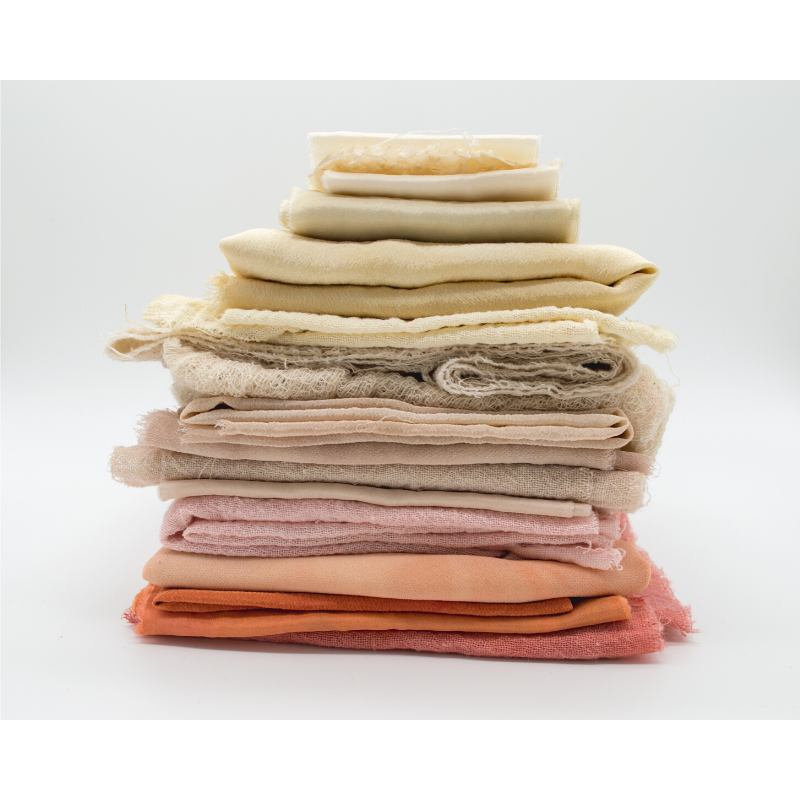
Linen
Perhaps you’re more familiar with linen than hemp, but it’s actually a similar fabric. Made from flax, linen is also soft and breathable. Both of these fabrics wrinkle easily of course. But both are also biodegradable. Linen, like hemp, also keeps you cool in the heat and warm in the cold.
- very durable and strong
- breathable, so often worn in hot climates
- soft and easy to wear
- great sun protection factor (SPF)
- beware: wrinkles easily
- can be recycled
So linen is another strong contender for being one of the most sustainable fabrics we can wear.
Wool
I love wool for its strength and softness. It is probably the most sustainable fabric you can add to your wardrobe. Wool is resilient, keeping its form and strength for years, so it’s a perfect choice for those pieces you hope to enjoy many years, such as blazers, trousers, skirts, sweaters and coats.
Of course, while the previously mentioned fabrics are derived from plants, wool comes from sheep. The quality of the wool depends on the type of sheep and the environment in which they live.
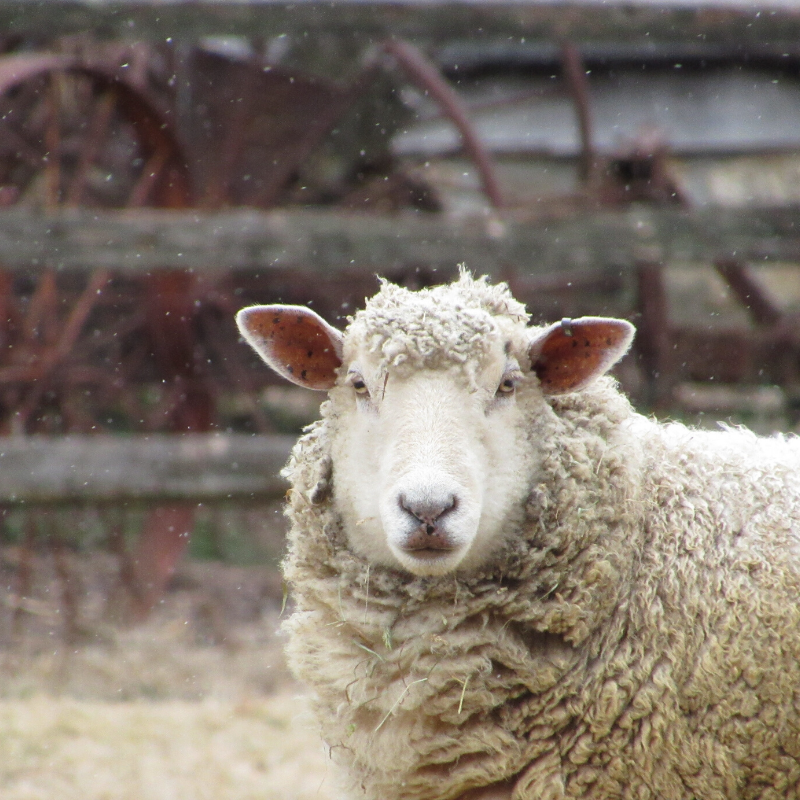
For instance, inner Mongolia is said to produce the finest cashmere because the harsh winters there force sheep to produce a double fleece. That soft inner fleece is made up of long, thin hairs which in turn produce high quality cashmere. So when you see “100% pure Mongolian cashmere” on the label you can know that you are getting a higher quality wool.
Wool is often associated with cool weather clothing because it insulates beautifully. But wool can actually be seasonless, cooling in the hotter months just as well as it warms in the winter.
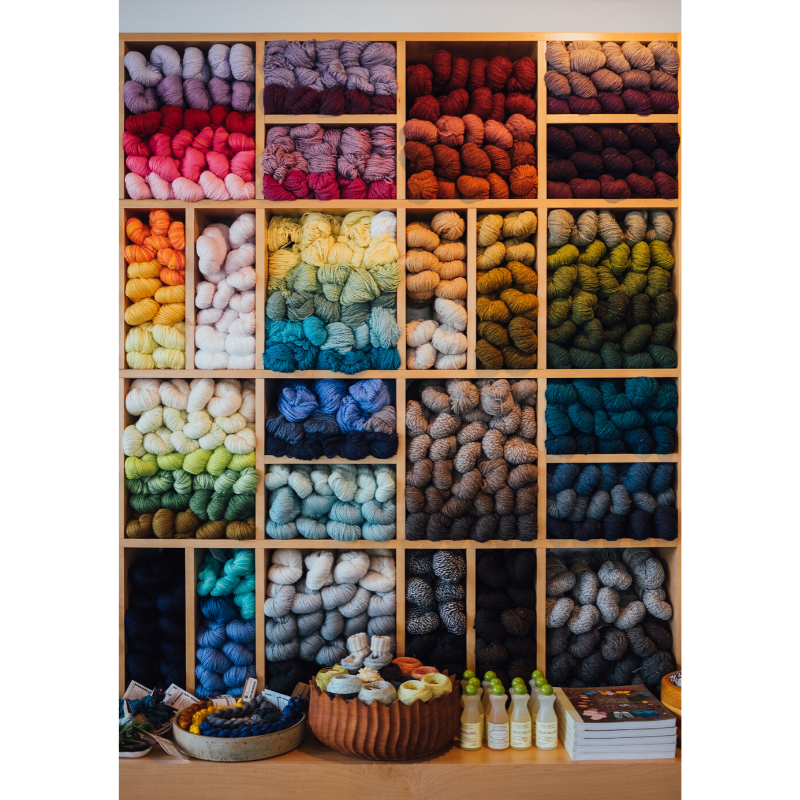
- durable and resilient
- breathable yet insulating
- wrinkle-resistant
- soft, but can be irritating to some skin
- biodegradable
- recyclable
- resists snagging and tearing
- dirt resistant
- includes different grades of wool such as sheep’s wool, merino wool, mohair, angora, cashmere, alpaca, and recycled or regenerated wool.
One of the newest additions to the types of wool you can buy is recycled or regenerated wool or cashmere. These are new fabrics produced from wool or cashmere scraps left over from the production process that would have otherwise been discarded as waste. You’ll find a selection of these products at retailers such as Everlane, Eileen Fisher and Patagonia.
So whether you opt for recycled or pure wool, it’s definitely one of the most sustainable fabrics with which you can fill your drawers. (Be careful of hanging wool items as some can loose their shape this way.)
Silk
Silk, yet another natural fiber, is produced by harvesting silk worms. We often associate silk with luxury, but you might be surprised to find it even in t-shirts.
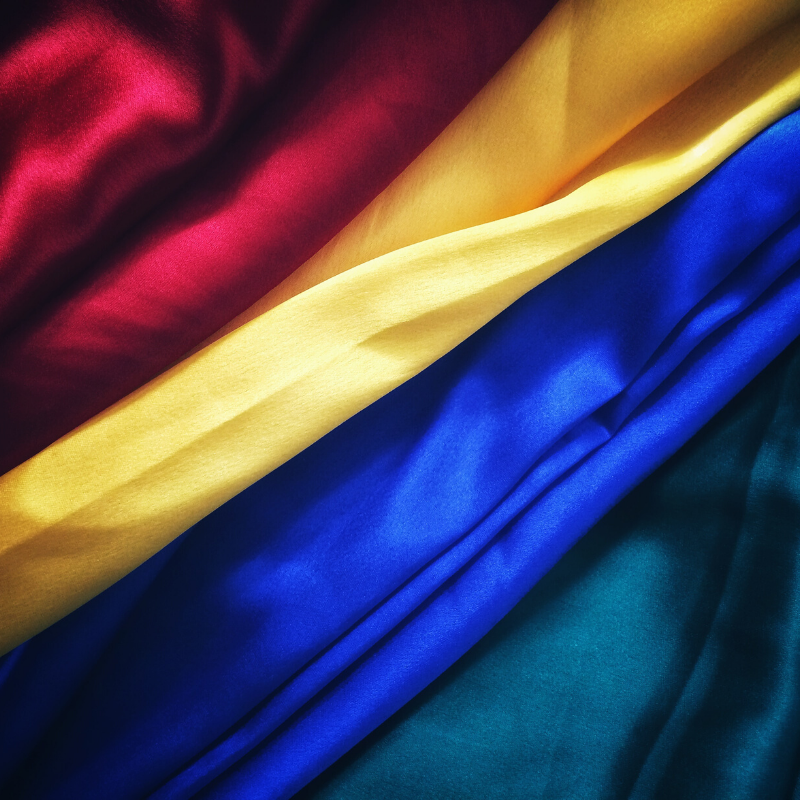
Silk is luxuriously soft on the skin. It, too, is perfect for cold and warm seasons. And it’s very strong, making it one of the most sustainable fabrics we can choose.
- luxuriously soft
- versatile
- good for warm and cold environments
- natural flame retardant
- has antibacterial properties
- beware: wrinkles easily
- biodegradable
- can be recycled
- can be produced cruelty-free (look for Ahisma or Peace Silk if that is important to you)
Wood Based
Lyocell
Lyocell is produced from the pulp of trees, primarily eucalyptus, but also oak and birch. It’s created through chemically processing the pulp into a sticky, viscose liquid that is then pushed through spinnerets that then yield bright, white lyocell fibers. These fibers are then spun into yarn and eventually woven into a very versatile fabric.
- soft to the touch
- very versatile
- doesn’t cling
- 50% more absorbent than cotton
- hypoallergenic and favored by those with sensitive skin
- high color retention
- enhanced breathability
- biodegradable
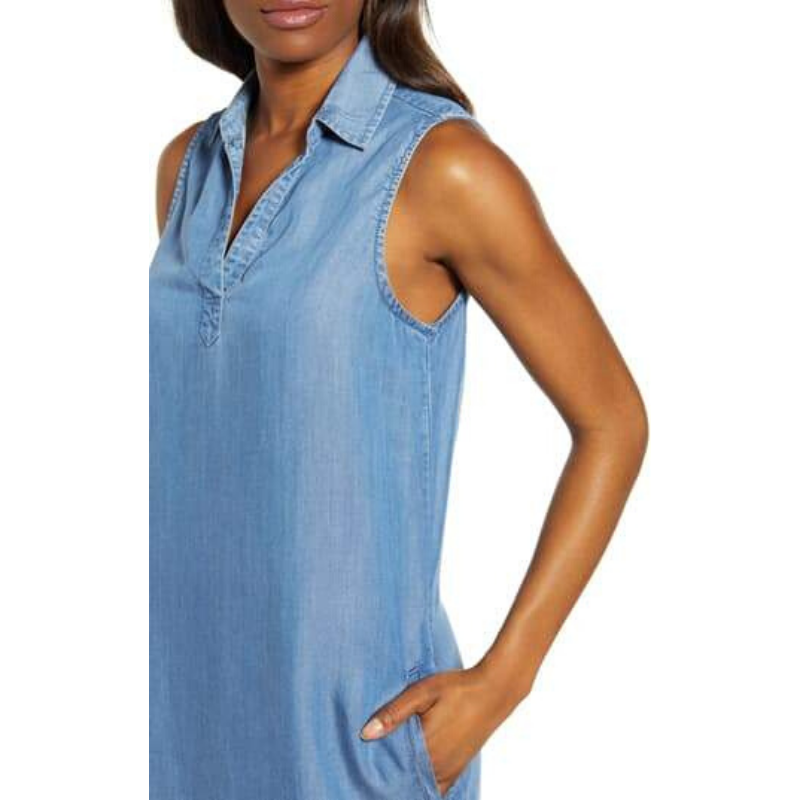
While lyocell is produced through a chemical process, those chemicals are not toxic or harsh and 99.5% of the dissolving agent can be used repeatedly in the process. And the process uses half of the water used in the production of cotton.
Lyocell is the generic name for the textile, but it’s not the only term you’ll see on clothing labels. Look for brand names such as Tencel, Newcell and Excel. The “cel” in the names clues you in to the use of this cellulosic fiber.
You’ll often find 100% lyocell in garments such as athleisure clothes because of its durability. But you’ll also see lyocell woven into other fabric blends. So while some don’t consider lyocell to be a true natural fiber, it is still one of the most sustainable fabrics we can choose and wear.
Synthetics
And then there were synthetics. The truth is, synthetic fabrics make up a large portion of what most of us wear. Fabrics such as polyester, acrylic, nylon, acetate and PU leather come from oil and coal based materials and are treated with harsh chemicals in processing.
That makes them both extremely durable and easy to work with but also harsh on the skin and non-breathable. They’re also not biodegradable at all. And there’s the rub if you’re at all concerned about the amount of waste produced by fast fashion.
- generally inexpensive to produce
- flexible
- resists wrinkles
- resists shrinkage
- durable and strong
- not biodegradable at all
- irritating to the skin
- not breathable at all
- can be less aesthetically pleasing than natural products
What’s the solution?
Look, I’m not a “tree-hugger,” but neither do I relish the thought of how quickly we are filling landfills with non-biodegradable products. That’s just one of many of the reasons I desire to move toward a slow fashion concept when it comes to building my wardrobe.
From now on I’ll simply be trying to buy fewer products made from synthetic fabrics. But throwing out the ones I already have would be counterproductive. And I probably won’t be practicing a zero tolerance when it comes to synthetics either. That’s just not practical for me.
But I’m determined to be more aware.
I’ll also look for products that specify that they’re made from recycled polyester. Unlike the production of virgin polyester, this process uses PET ( polyethylene terephthalate), which is found in recyclable waste materials such as plastic water bottles. So the production of recycled polyester actually provides a use for trash that would otherwise end up in those landfills or litter the environment.
Final Words
Thanks so much for wading through this information with me. I know this is a lengthy post. But I think it’s good for us to have this information under our belts if we’re really serious about moving toward slow fashion, as evidently many of us are. Now we’ll at least be more informed consumers as we attempt to select the most sustainable fabrics possible for our wardrobes.

Pin this!
I invite you to pin this post to one of your Pinterest boards for future reference. And I’d love it if you shared it on Facebook, too. Thanks so much for sharing!

Don’t Miss a Post:
If you like what you’re seeing here at Dressed for My Day, I invite you to subscribe to my email list. You can receive an email each time I post (about 6 times weekly) or just on Saturdays. You choose! But you’ll also receive the password to open up all the subscriber freebies I offer.
Blessed for My Day
Who do you know that is struggling today? Maybe your son or daughter is working through issues at work or home. Perhaps you have a friend who is discouraged or feeling broken. Or it could be that your spouse is going through a difficult time.
Today let’s try to be more observant and really notice those around us who are struggling. Let’s ask the Lord to make us more sensitive to the needs of other people and more willing to pause and show them a little patience and kindness. Let’s look for opportunities to bless others as we would love for someone to minister grace to us.
…with all humility and gentleness, with patience, bearing with one another in love… ~ Ephesians 4:2

Very informative and valuable to know. Thanks Kay! I know you put a lot of work into this post and I for one, appreciate it!
Very informative! Thank you!
Very informative! Thank you!
This is a very informative blog post that gives me a lot of food for thought. It is apparent that you have put much research into this piece of writing and I look forward to see how you proceed with future posts and purchases.
What a great post, Kay!! So very informative! I did save it to Pinterest and am sure I will refer to it again. I have noticed in the past few years, the quality of fabric has changed. Some garments I have purchased seem to end up in shreds; even though I am extremely careful with laundering them.
Thanks again for the post! I wish I were in your area and could attend your speaking engagement!
Kay, thank you so much for this great information! Thanks also for your Blessed for my Day posts, which I TREASURE! I recently saw the movie A Beautiful Day in the Neighborhood, as well as the documentary on Fred Rogers’ life. I am so inspired! Your post today feels similar to Mr. Rogers’ message. He really took the time with EACH person he encountered – to listen with an open heart, giving children and adults his full attention and presence. Thank you, Kay, for this precious reminder to pay attention to others around us and to ask the Lord to make us sensitive to the needs of others. You are a great compass for me and I am so grateful 🙂
Kay, thank you for this information. Also, I haven’t got a chance to tell you how sorry to hear about your little dog. I lost my little Rosy ( Yorkie) this past November. Without going into lengthy detail about her, she was my little buddy. Both my husband and I grieved her and still miss her little presence. I do enjoy your posts and thanks for making it personal. I like the new way you are presenting the format. And, I enjoy the tips and reflections.
Thanks for this post, Kay. A great reference resource. Just one clarification: cashmere is not a category of wool. It is not derived from sheep, but from goats. I say this not to be the Technically Correct Word-Choice Nazi, but because it makes a big difference to anyone who is sensitive or even allergic to wool., like my daughter-in-law. One Christmas I took her shopping at Talbots and suggested she might like a cashmere sweater. I knew she was allergic to wool and any product from sheep, even lotions that contained lanolin.
She quickly replied that she would love to, but she couldn’t wear wool. When I explained that cashmere came from goats she immediately whipped out her phone and checked a few of her allergy-guidance websites. With a hopeful smile she said, “I’ll know as soon as I touch it.” She touched and then tried on a lovely cashmere sweater. It felt great. Now she’s been able to add warmer cashmere sweaters to her cotton ones.
Ahh. Great info Lael. Thanks so much.
oops…take it back. Cashmere *is* a category of wool. But from goats. Sorry for the mix up.
?
Thank you for all the hours you put into your blog. Your posts are always helpful, and I appreciate your detailed teaching style.
Thanks Elizabeth. It’s a joy.
Highly informative post. Thanks for all the research you’ve done. Gives me a lot to think about.
Great. I’m glad you enjoyed the post.